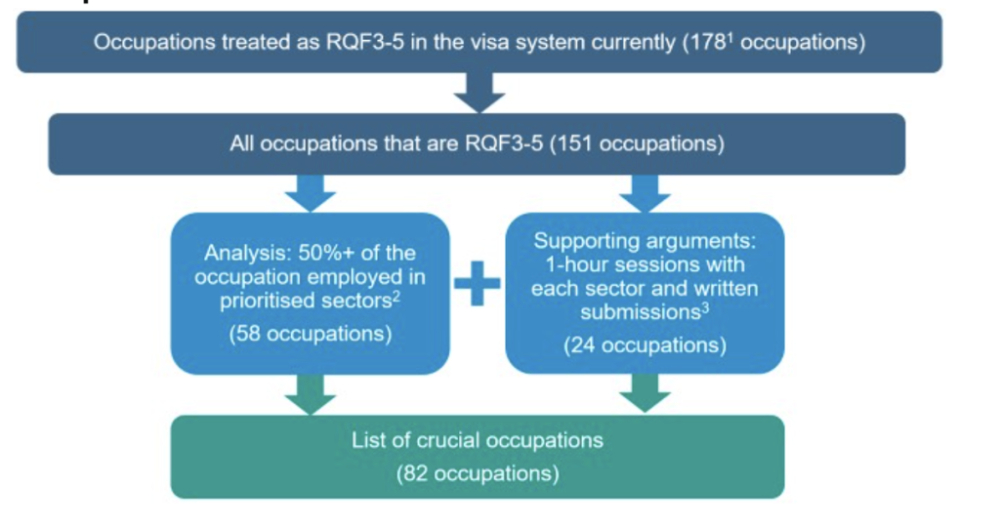- within Immigration topic(s)
- in United States
- with readers working within the Banking & Credit, Oil & Gas and Utilities industries
- within Law Practice Management topic(s)
The government's independent immigration advisors have delivered a tough new framework for the Temporary Shortage List (TSL), making it a highly selective, last-resort visa route for a small number of essential jobs.
In a report to the Home Secretary, the Migration Advisory Committee (MAC) has completed the first stage of its review, outlining a rigorous two-stage process designed to drastically reduce the number of occupations eligible for the scheme.
The core message to employers and government is that access to migrant labour will be granted only after they prove a genuine shortage and have a robust plan to fix the underlying problem.
The Temporary Shortage List
The TSL has been explicitly designed to provide time-limited access to the immigration system for medium-skilled (RQF 3-5) occupations where long term shortages have been identified and which have been deemed as crucial to the delivery of the UK's Industrial Strategy or critical infrastructure.
The MAC's recommendations are designed to ensure it lives up to that description.
A key first step that the MAC recommends is ending "exceptional treatment" for occupations incorrectly classified as medium-skilled.
In a specific example, they recommend reclassifying 'Construction Project Managers' as a higher-skilled role (RQF 6+), making it ineligible for the TSL and ensuring the route is focused on truly mid-level trades.
The Two-Stage Filter: From 82 to a Final TSL Shortlist
The MAC has established a strict two-stage filtering process to select which occupations make the final list.
Stage 1: The "Crucial Occupation" List (Complete)
The committee used a data-driven method, identifying roles where over 50% of the workforce is employed in key infrastructure sectors. This produced a list of 82 occupations, primarily in construction that will proceed to the next stage.
The MAC was clear to warn that "No occupation... should... assume that they will be recommended for actual inclusion."
Attached below is an overview of how the MAC identified the crucial occupations.

Stage 2: The Final Hurdle (Due July 2026)
This is where the 82-occupation list will be cut down to a final, much shorter TSL. Each occupation must pass two strict tests:
- Proof of Shortage: There must be clear evidence of a genuine labour shortage.
- A Detailed "Jobs Plan": This is the most significant new requirement. The relevant industry, led by government departments, must have a formal plan that includes a skills strategy, a partnership with the Department for Work and Pensions to recruit UK workers, and steps to prevent the exploitation of migrant workers.
The MAC was unequivocal, stating that they cannot recommend any occupation for the TSL that does not have such a plan.
Key Features of the Proposed TSL Route
If an occupation clears both hurdles, the MAC recommends it be added to the TSL with these conditions:
- Time-Limited: The default duration for an occupation to be added to the TSL should be three years, although some occupations may be added for a shorter period if Jobs Plans are lacking in detail but likely subject to rapid improvements.
- Visa Duration and Path to Settlement: Migrants on the TSL will likely have a visa duration of 3-5 years. The MAC does not recommend renewals beyond five years if the government decides that the TSL should not be a route to settlement. Workers would be allowed to switch to a higher-skilled visa from within the UK, supporting career advancement.
- English requirements: No lower than B1.
- No Dependants: TSL visa holders would not be able to bring family members.
A Fundamental Shift in Immigration Policy
The MAC is moving the UK away from a system that simply reacts to employer demands for migrant labour, towards one that forces a domestic solution first. The final list of occupations that will make it onto the TSL is expected in July 2026.
Based on the MAC's stringent new tests, the final list is anticipated to be a small fraction of the initial 82, reflecting a harder line on using immigration to solve labour market issues.
The content of this article is intended to provide a general guide to the subject matter. Specialist advice should be sought about your specific circumstances.

